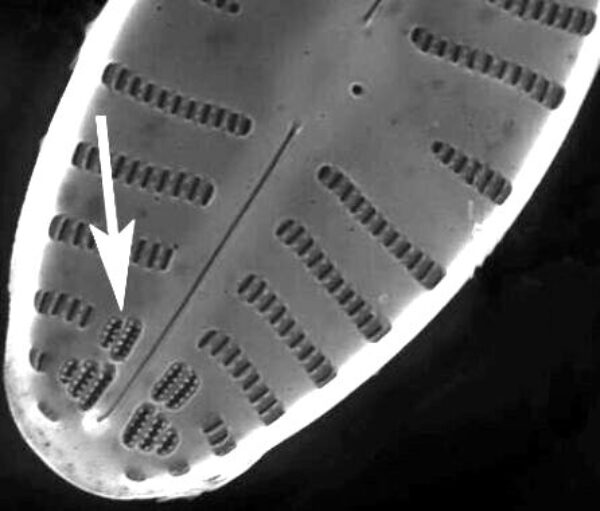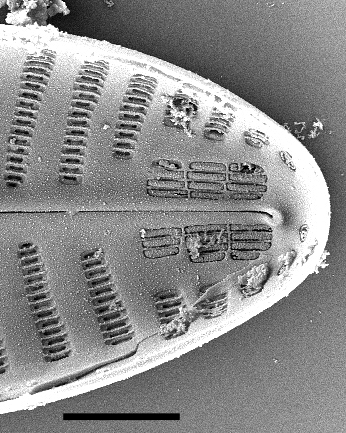Glossary
Like the rest of this website, the glossary is a work in progress. If we’ve missed a term, please contact us to let us know the term and references.
Annulus (Geissleria)
An annulus (in genus Geissleria) is a group of apical striae separated from the regular striae of the valve face. An annulus has one to four transapical striae that interrupt the typical striae on each side of the distal raphe ends. The annulus may be separated from typical striae by a narrow hyaline area which may have a ring shape. From Latin for ring. Plural is annuli.
The areolae in these striae may be larger, more elongate, and more densely spaced than the rest of the areolae. Internally in some species, these areolae possess a cluster of silica outgrowths.
Annuli may be distinct or barely discernible, depending on the species. For example, the annuli of G. acceptata are difficult to resolve in LM.
This group of striae was named for the hyaline ring around them in Navicula annulata (now Geissleria annulata). This feature separates Geissleria from Navicula.
Citations
-
Publication Link: 10.11646/phytotaxa.177.5.1

Image Credit: E.F. Stoermer

Image Credit: Rosalina Stancheva

Image Credit: M. Potapova
 Diatoms of North America
Diatoms of North America

